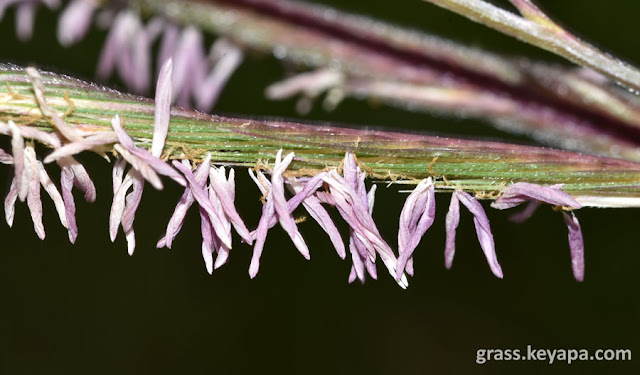The previous article to this is here:
Cogon in Colorado: An Alarming Case of Natural Reversion from the Ornamental Variety
We will be heading back to the east this weekend, but before we leave I spent some time surveying the community for any other reversions.
I found a total of 17 clusters of Imperata cylindrica, and 12 of them had putative reversions. This means that more than 70% of the plantings gave rise to wild type Cogon grass. I mapped all the clusters for use later.
 |
| Cogon grass fills a planting area. The "hole" in the middle of the mass is because of the presence of a large sculptured rock |
I determined that there was a reversion event by checking whether there were flowerheads and/or the body form had changed to all-green, along with a concomitant increase in height and size. Out of the 12 reverted clusters, a couple had flowerheads, but still had the reddish leaves and smaller size, but most of the reversions were distinctly different in vegetative form than the ornamental.
 |
| A short-statured bush is being choked by the surrounding cogon |
This reversion of an ornamental form to the dangerous wild type again highlights the problem of ornamentals that are still being sold (including in big box stores) to consumers, even though some of the species are illegal in certain states (and in the case of cogon grass, the species is considered a federal noxious weed).
Unfortunately, the ornamental variety with its red-tinged leaves are beautiful, and even the wild type can be attractive. This is because the blades are quite straight and seem to rise up directly from the ground, and when I showed my wife the imposing stands of reverted cogon grass, she mentioned that they looked nice.
But not only is cogon grass a menace to native species, but it is also prone to causing large fires, and is thus a potential danger to people and human habitation.
Samples have already been given to the state university, and once it has been positively identified, actions to clear the infestations should begin.























